(314) Tour to see Wisteria (1)
文字数 4,103文字
Previously I named chapter 303 and 304 "Cherry Blossom Tour".
In the same way, I thought that the title of this chapter should be "Fuji Meguri" or "Wisteria Blossom Tour,'' but there is no ingenuity with just that, so I'll add the story of "Itoshi Fuji" to Part (1) and the story of "Fuji Musume (Wisteria Maiden)" to Part (2).
If you are not interested in "Itoshi Fuji", please skip the following and proceed to Photo 3.
☆ ☆ ☆ ☆ ☆ ☆
[Itoshi Fuji]
In 1790, Santo Kyoden (山東京伝, ukiyo-e artist and playwright) published a collection of Komon patterns called "Komongawa".
※"Komongawa(小紋雅話)" is a collection of Komon designs written in 1790 by Santo Kyouden. "Komon" is a small pattern dyed using stencils that was popular among the common people in the Edo period. Kyoden arranged his own style of Komongawa.
Kyoden wrote in the preface of "Komongawa", "I made dozens of things that I couldn't tell whether they were paintings or letters, using the dog's footprints as plum blossoms, and named them Komongawa."
When I heard this story, I felt very happy, because I'd never thought that a dog's paw prints could become art. If it's art made of a dog footprint, I can participate it, too.
Photo ① is the Komon "Snow Foot" taken from the 1895 reprint of "Komongawa". You can see dog footprints, human footprints, and clog tracks.
Photo ② is "Itoshi Fuji". Kyoden’s comment is "It's Keishi's idea". Keishi is the pen name of Tomijuro Nakamura I (a Kabuki actor)who premiered "Kyoganoko Musume Dojoji (京鹿子娘道成寺)" in 1753. Kyoden borrowed the design of "Itoshi Fuji" from Keishi's yukata or a casual cotton kimono.
Looking at Photo ②, do you know why the title is "Itoshi Fuji (いとしふじ)"?
There are a total of 10 characters for "い", and "し" is added to them. 10 is read as” と”or “とう” in Japanese. And because it is expressed with Fuji (wisteria flower) komon, it becomes "いとし wisteria" or "いとしFuji". "いとし(Itoshi)" also means "love" or "adorable" in Japanese. In other words, "Itoshi Fuji" is a metaphor for "I love you." Did you get it?
Elements of minimal art, repetitive techniques, and conceptual art can also be seen in "Komongawa". The komon of "Komongawa" is still used in the design of tenugui (Japanese hand towels) and Japanese clothes. Kyoden was a prolific creator in the Edo period.
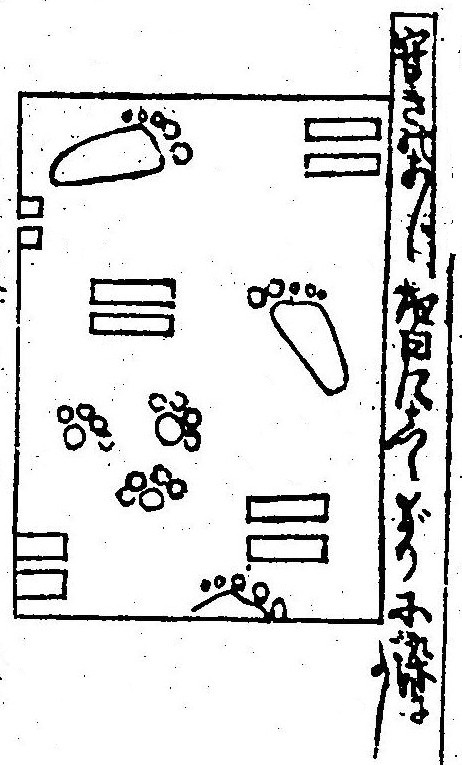
① Komon "Snow foot (Komon elegant story)"
"Ancient Patterns: Komon Gawa", Kiichiro Yano, Akira Aug.1896, Digital Library, National Diet Library, Japan https://dl.ndl.go.jp/pid/854376 (ref 2023-04-26)
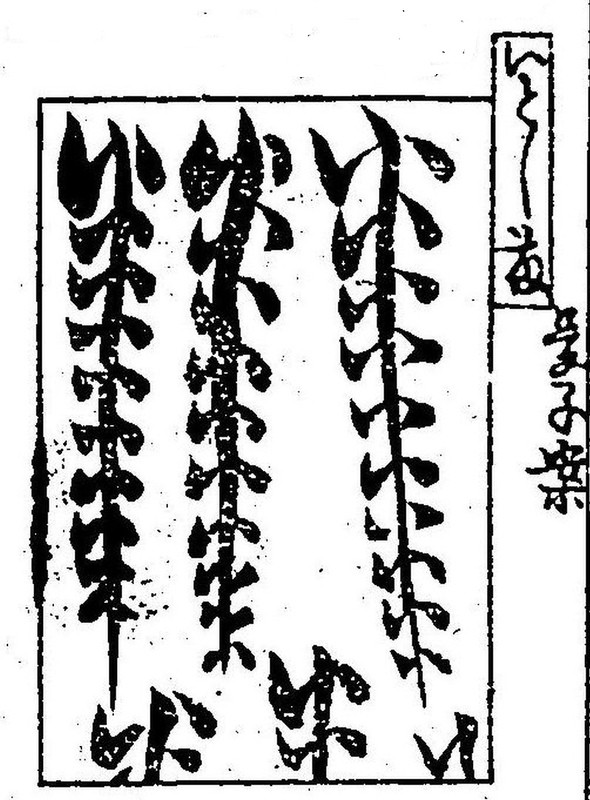
② Komon "Itoshi Fuji (Komon elegant story)"
"Ancient Patterns: Komongawa", Kiichiro Yano, Akira Aug.1896, Digital Library, National Diet Library, Japan https://dl.ndl.go.jp/pid/854376 (ref 2023-04-26)
☆ ☆ ☆ ☆

③ I've arrived at Amakubo park (天久保公園). There is a 23m wisteria trellis which is the second longest in Tsukuba city.
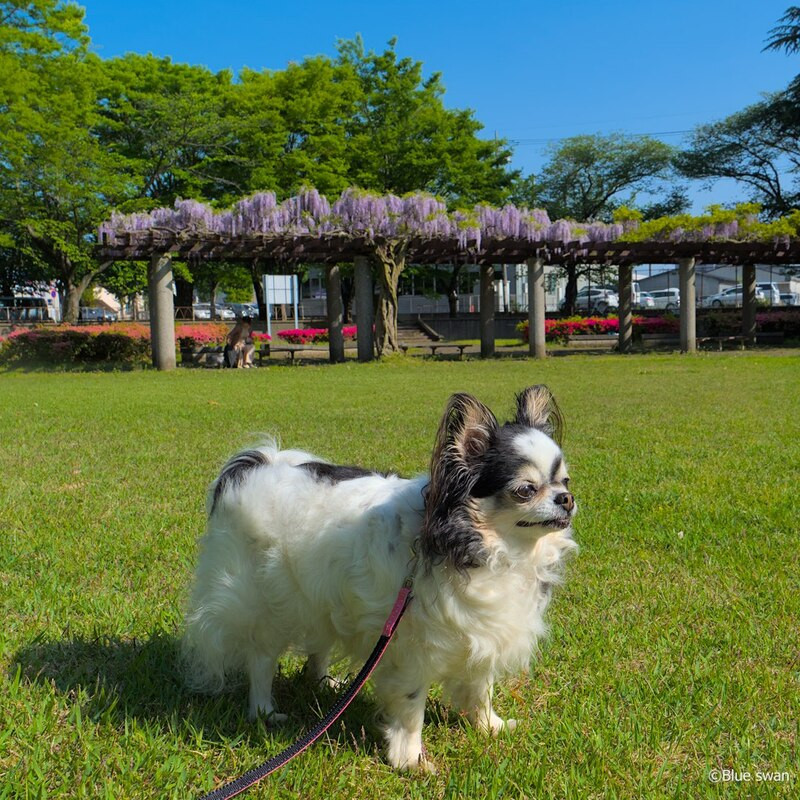
④ I am in front of the wisteria trellis in Amakubo Park.

⑤ I’m resting in front of the wisteria trellis in Amakubo Park.

⑥ This is a large wisteria trellis (50m) in Matsushiro Park(松代公園). It is the largest in Tsukuba City.
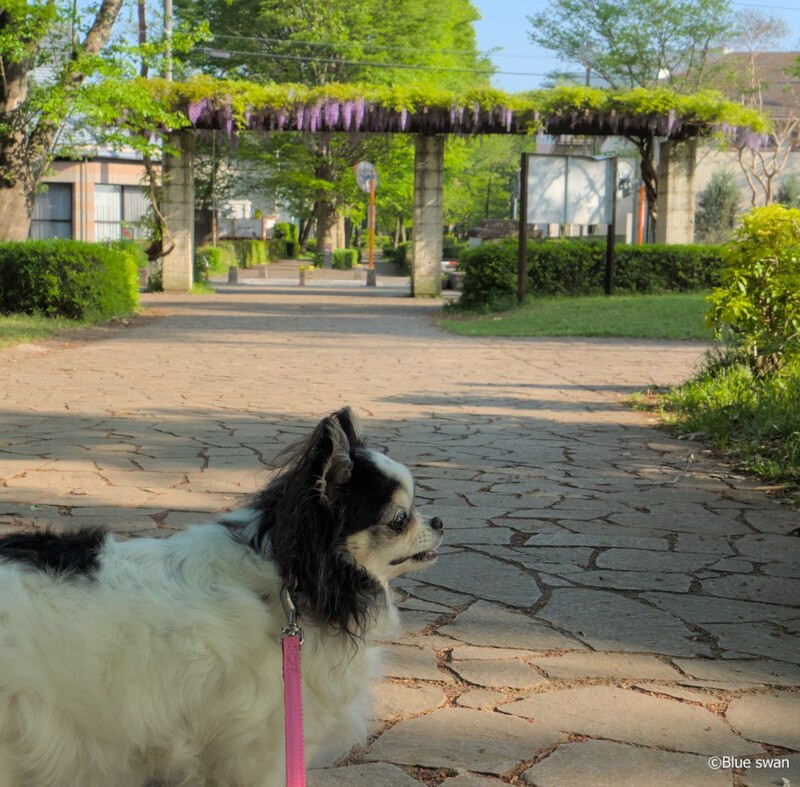
⑦ This is a small wisteria trellis in Matsushiro Park.
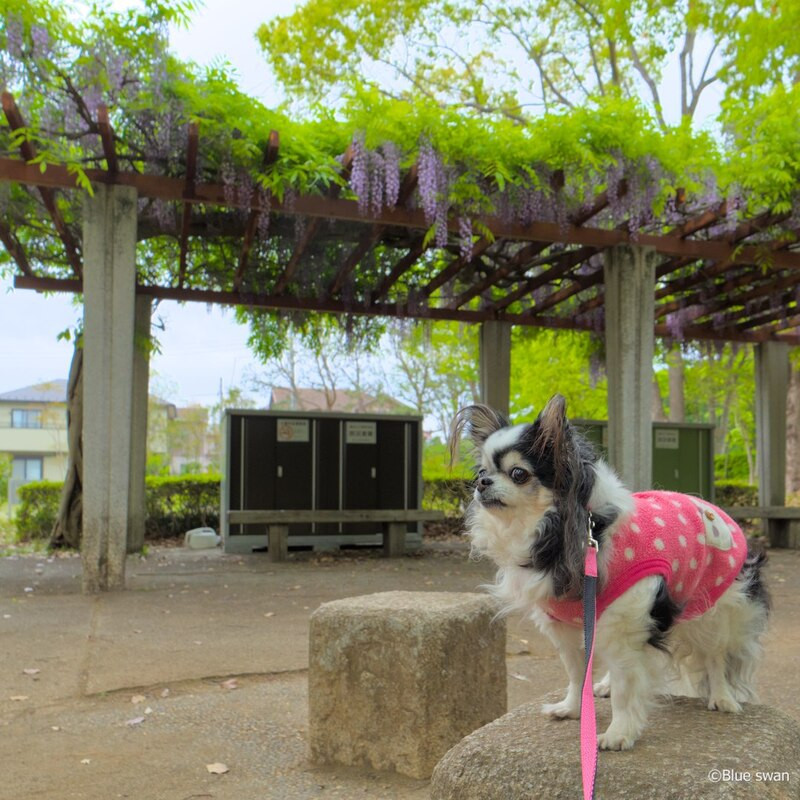
⑧ This is a wisteria trellis of Kamisyuku Children's Park(上宿児童公園).
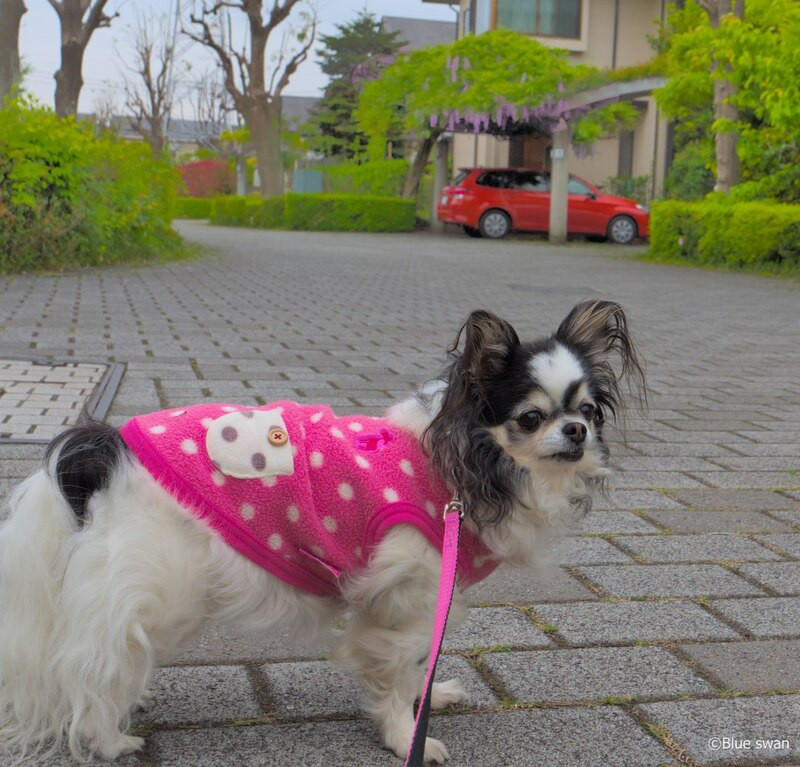
⑨ This is a wisteria tree in the Ninomiya 4-chome area. The wisteria is attached to the carport pergola.
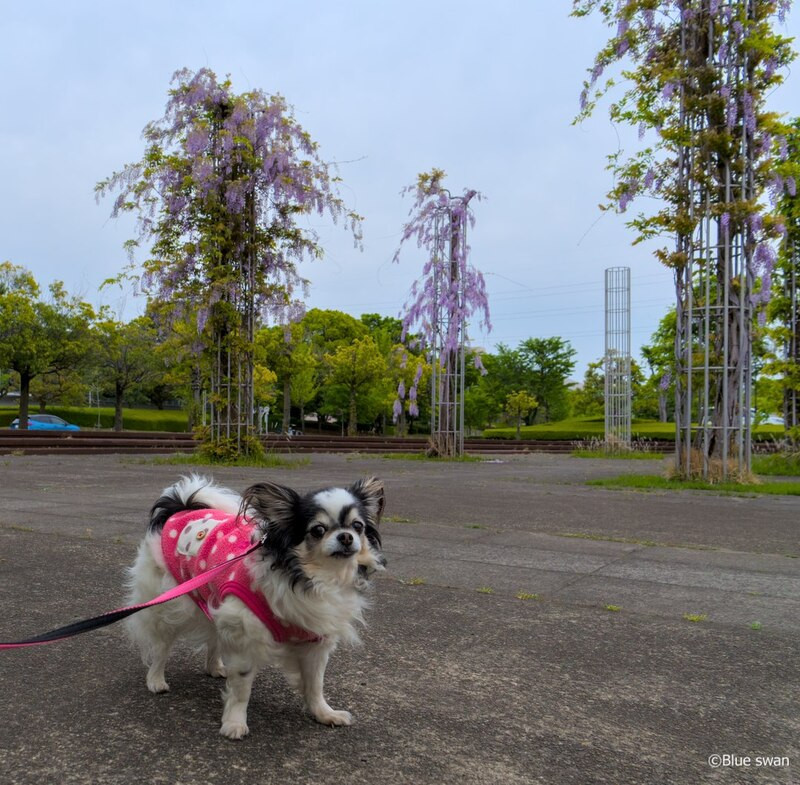
⑩ These are the wisteria flowers in Science Expo Commemorative Park(科学万博記念公園).
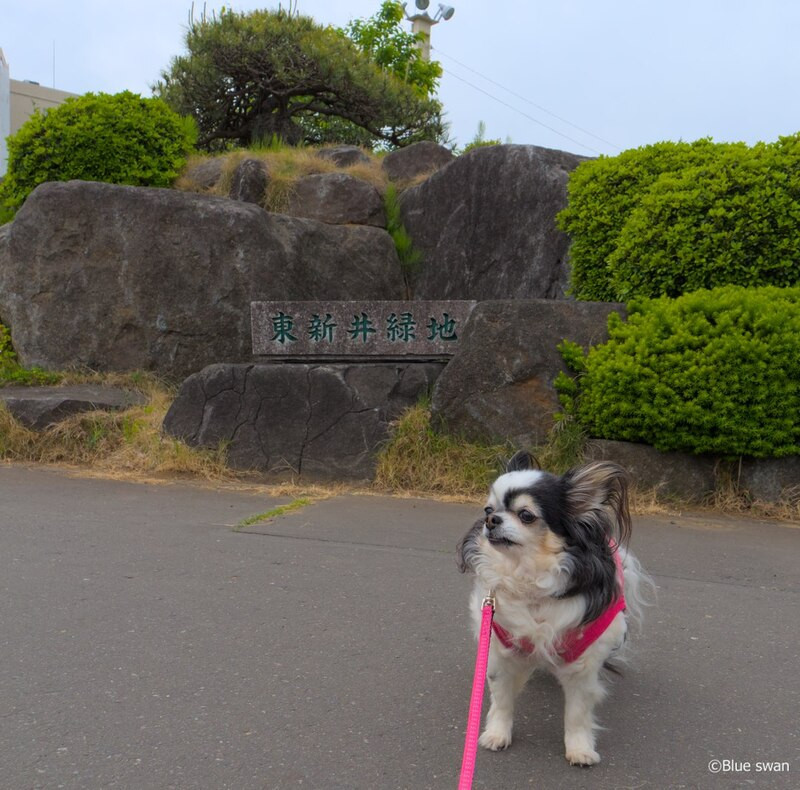
⑪ I’ve arrived at Higashiarai Green Space(東新井緑地), the smallest park in Tsukuba city.
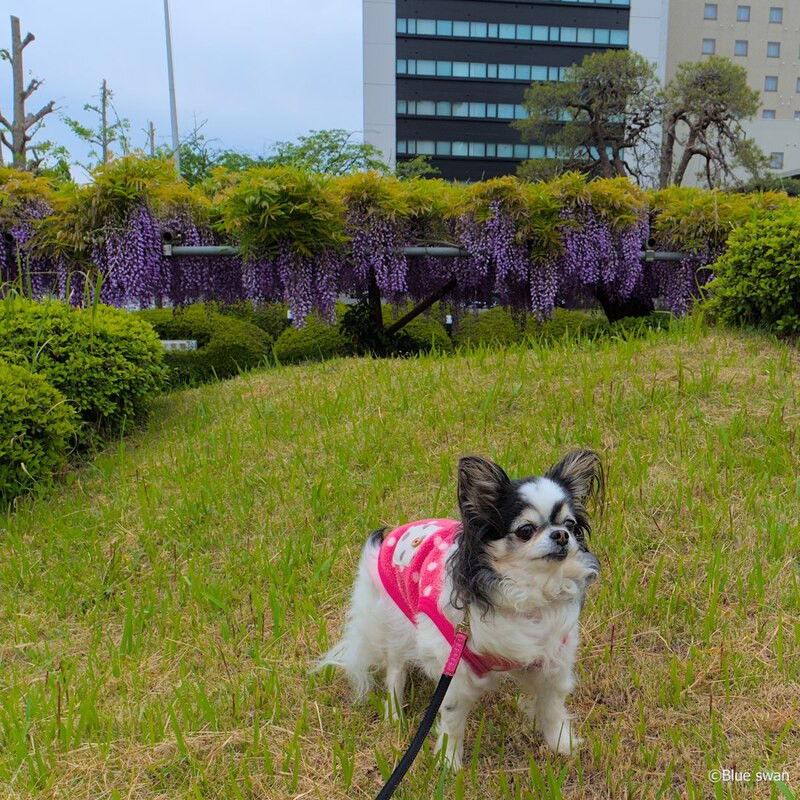
⑫ I’ve just climbed an artificial hill. You can see wisteria flowers in the back. (Higashiarai Green Space)
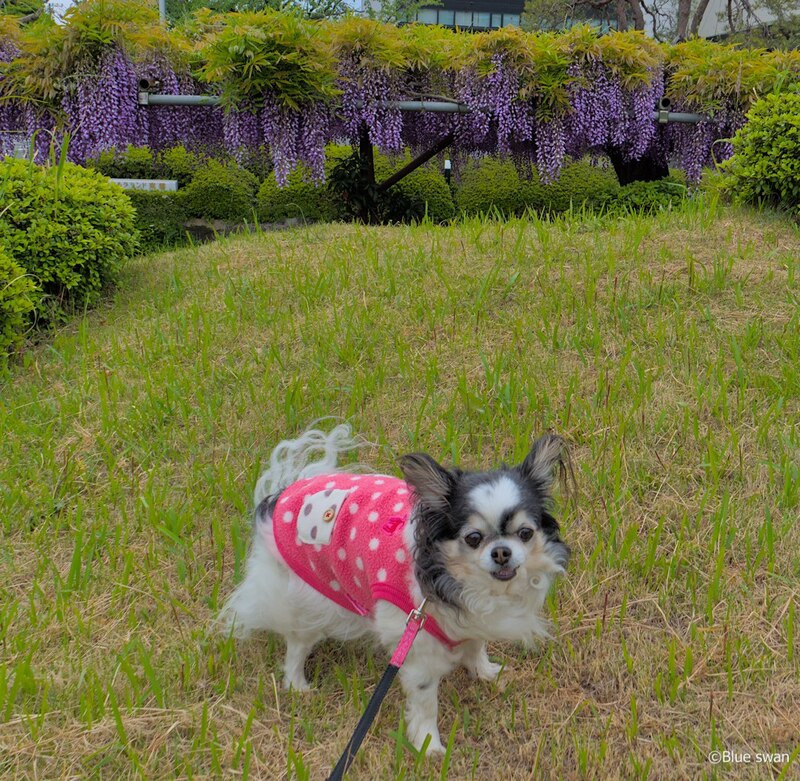
⑬ I’m relaxed and in a good mood. (Higashiarai Green Space)

⑭ I am in front of the wisteria trellis. The wisteria flowers in this park are the best maintained in the city. (Higashiarai Green Space)
In the same way, I thought that the title of this chapter should be "Fuji Meguri" or "Wisteria Blossom Tour,'' but there is no ingenuity with just that, so I'll add the story of "Itoshi Fuji" to Part (1) and the story of "Fuji Musume (Wisteria Maiden)" to Part (2).
If you are not interested in "Itoshi Fuji", please skip the following and proceed to Photo 3.
☆ ☆ ☆ ☆ ☆ ☆
[Itoshi Fuji]
In 1790, Santo Kyoden (山東京伝, ukiyo-e artist and playwright) published a collection of Komon patterns called "Komongawa".
※"Komongawa(小紋雅話)" is a collection of Komon designs written in 1790 by Santo Kyouden. "Komon" is a small pattern dyed using stencils that was popular among the common people in the Edo period. Kyoden arranged his own style of Komongawa.
Kyoden wrote in the preface of "Komongawa", "I made dozens of things that I couldn't tell whether they were paintings or letters, using the dog's footprints as plum blossoms, and named them Komongawa."
When I heard this story, I felt very happy, because I'd never thought that a dog's paw prints could become art. If it's art made of a dog footprint, I can participate it, too.
Photo ① is the Komon "Snow Foot" taken from the 1895 reprint of "Komongawa". You can see dog footprints, human footprints, and clog tracks.
Photo ② is "Itoshi Fuji". Kyoden’s comment is "It's Keishi's idea". Keishi is the pen name of Tomijuro Nakamura I (a Kabuki actor)who premiered "Kyoganoko Musume Dojoji (京鹿子娘道成寺)" in 1753. Kyoden borrowed the design of "Itoshi Fuji" from Keishi's yukata or a casual cotton kimono.
Looking at Photo ②, do you know why the title is "Itoshi Fuji (いとしふじ)"?
There are a total of 10 characters for "い", and "し" is added to them. 10 is read as” と”or “とう” in Japanese. And because it is expressed with Fuji (wisteria flower) komon, it becomes "いとし wisteria" or "いとしFuji". "いとし(Itoshi)" also means "love" or "adorable" in Japanese. In other words, "Itoshi Fuji" is a metaphor for "I love you." Did you get it?
Elements of minimal art, repetitive techniques, and conceptual art can also be seen in "Komongawa". The komon of "Komongawa" is still used in the design of tenugui (Japanese hand towels) and Japanese clothes. Kyoden was a prolific creator in the Edo period.

① Komon "Snow foot (Komon elegant story)"
"Ancient Patterns: Komon Gawa", Kiichiro Yano, Akira Aug.1896, Digital Library, National Diet Library, Japan https://dl.ndl.go.jp/pid/854376 (ref 2023-04-26)

② Komon "Itoshi Fuji (Komon elegant story)"
"Ancient Patterns: Komongawa", Kiichiro Yano, Akira Aug.1896, Digital Library, National Diet Library, Japan https://dl.ndl.go.jp/pid/854376 (ref 2023-04-26)
☆ ☆ ☆ ☆

③ I've arrived at Amakubo park (天久保公園). There is a 23m wisteria trellis which is the second longest in Tsukuba city.

④ I am in front of the wisteria trellis in Amakubo Park.

⑤ I’m resting in front of the wisteria trellis in Amakubo Park.

⑥ This is a large wisteria trellis (50m) in Matsushiro Park(松代公園). It is the largest in Tsukuba City.

⑦ This is a small wisteria trellis in Matsushiro Park.

⑧ This is a wisteria trellis of Kamisyuku Children's Park(上宿児童公園).

⑨ This is a wisteria tree in the Ninomiya 4-chome area. The wisteria is attached to the carport pergola.

⑩ These are the wisteria flowers in Science Expo Commemorative Park(科学万博記念公園).

⑪ I’ve arrived at Higashiarai Green Space(東新井緑地), the smallest park in Tsukuba city.

⑫ I’ve just climbed an artificial hill. You can see wisteria flowers in the back. (Higashiarai Green Space)

⑬ I’m relaxed and in a good mood. (Higashiarai Green Space)

⑭ I am in front of the wisteria trellis. The wisteria flowers in this park are the best maintained in the city. (Higashiarai Green Space)
